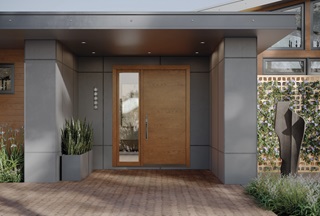French doors have always been de rigeur in residential design. The name itself sounds sophisticated. But what lies beyond the name and under the surface of this door type? Why would you choose French doors instead of a
modern swinging door, for example? We delved into the subject to bring you the complete guide to French doors, so you can make the most informed decision when it comes to choosing the product that’s best for you.
What are French Doors?
Back in the 17th century, French architects, inspired by Italian designs, started installing large
casement windows, side by side, that ran all the way to the floor. These French windows were designed to bring more light indoors and to create easy access to balconies and verandas. French windows became popular in England and eventually found their way to the United States, under the new name of
French doors.
French doors today, like their original French window predecessors, are comprised of two panels made mostly of glass. Aesthetically, they can also be recognized by their wider, more weighty, top and bottom rails. It’s also common for French doors to feature some sort of divided lite pattern, which is an homage to the original French windows which were built with smaller, individual panes of glass divided by muntin bars. At that time, muntin bars served a practical purpose because large panes of glass were not readily available.
It's not surprising that French doors are closely associated with a more traditional aesthetic. Installing French doors is still an effective way to flood a room with natural light and they commonly offer access to decks and patios.
Interior French doors are also available and can be a dramatic design element when used as a passage between large indoor spaces.
